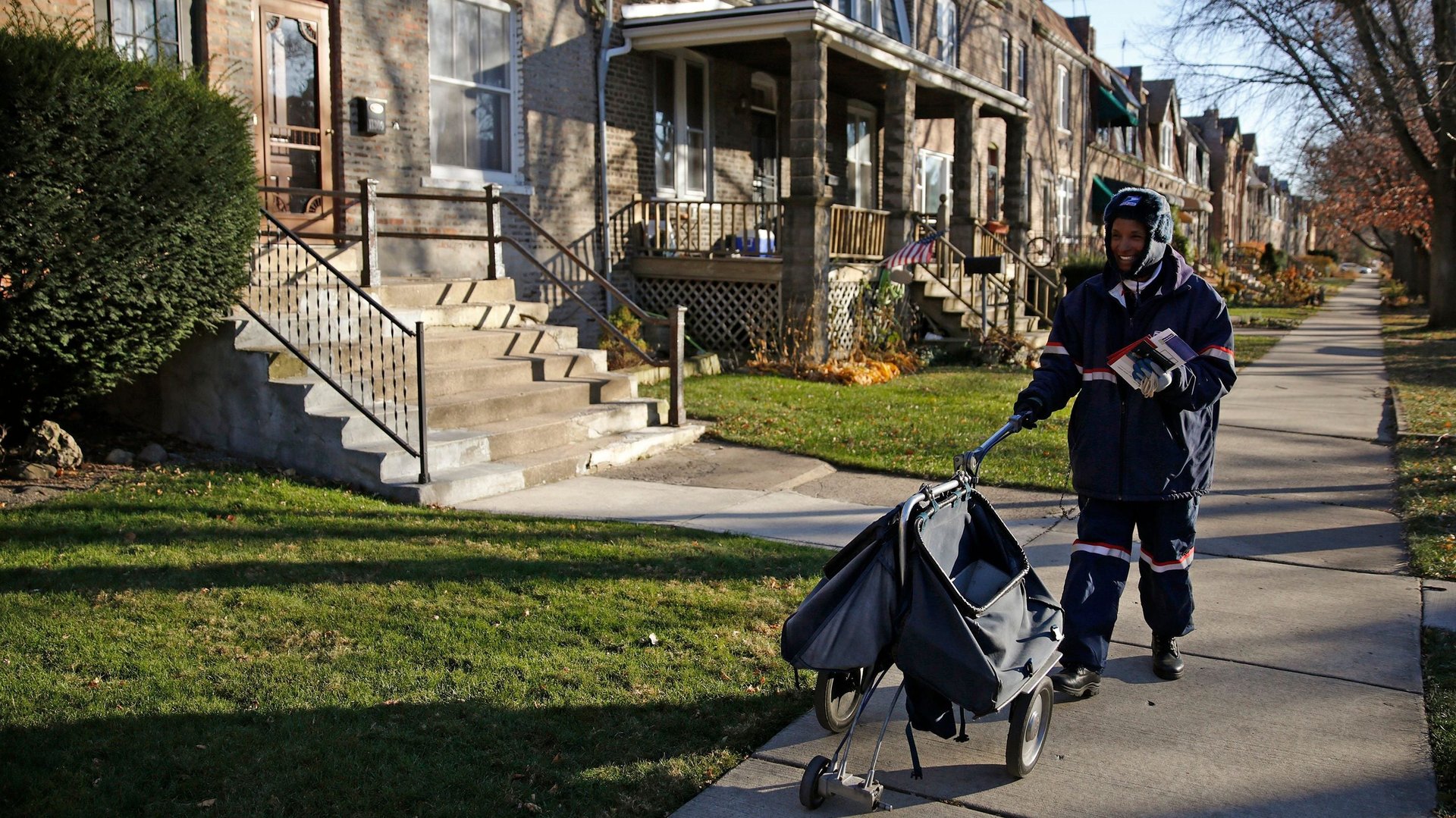What the US post office really gets from Amazon
In the past few weeks, Donald Trump has tweeted multiple times about whether the US Postal Service is “Amazon’s delivery boy.”


In the past few weeks, Donald Trump has tweeted multiple times about whether the US Postal Service is “Amazon’s delivery boy.”
In an effort to establish the facts, UBS hosted a call with the former postmaster general, Patrick Donahoe, who described how the USPS thinks about Amazon’s business. In the call, he stressed that raising prices on Amazon’s volume risks Amazon accelerating its own creation of the infrastructure around the so-called “last mile”—meaning putting things directly into the hands of customers—that the post office has had in place for the past century.
Amazon already handles the logistics and fulfilment further up the delivery funnel so that 75% of what goes through the USPS from Amazon is all “last mile.” Raising prices might also prompt a shift to alternative private providers, such as Fedex and UPS.
How Amazon really impacts the US postal service
The USPS business is split into two parts—monopoly mail and competitive products. Monopoly mail is what we all think of as regular post. This accounts for around 70% of USPS revenue and 97% of USPS volume. It is, unsurprisingly, declining.
Competitive products—the area where Amazon falls—accounts for around 30% of revenue but only 3% of volume. According to the UBS note, monopoly-mail volume declined by 4% between 2016 and 2017, while competitive products grew by 14% over the same time period.
By law, the USPS has to charge competitive products at least enough to cover 5.5% of “institutional/fixed costs,” a slightly fuzzy definition that tries to account for a level of marginal-cost allocation for competitive products. UBS points out that this figure sounds low when compared to the size of the package business (in revenue terms) but it’s not when you consider that a large part of what’s required to deliver a package is needed for the monopoly mail service anyway.
Competitive products are more than meeting this 5.5% requirement, according to UBS. In 2017, the minimum revenue requirement from competitive products was $1.6 billion, while the actual contribution was $6.8 billion, leaving an excess contribution of $5.2 billion.
And Amazon represents around 25% of this revenue, making them very likely the biggest customer for competitive products.
If this is the case, you’d expect Amazon to get a discount for volume, a normal business practice. While we can’t know what this volume discount is, it’s clear that the competitive business segment is working for the USPS overall. With $5.2 billion excess contribution across 5.1 billion packages, the competitive business contributed an excess of $1 per package on average in 2017.
This year, with the 5.5% allocation up for review by the regulatory group that oversees the post office, UBS calculates that an increase into the mid-teens would be enough to accelerate Amazon’s own build-out, which would potentially result in a significant drop in contribution to the USPS’s overall revenue.
But something tells us that Trump, an avid reader of Amazon founder Jeff Bezos’s Washington Post, is not listening.